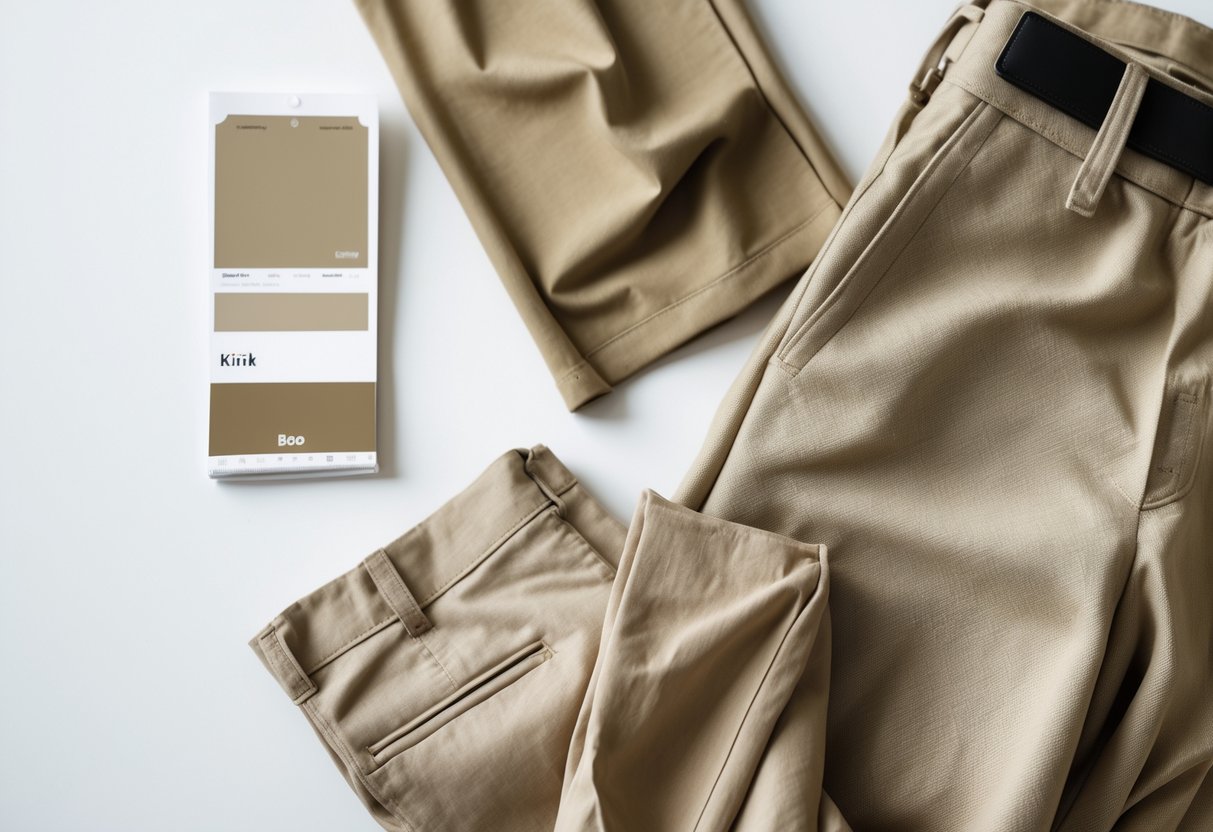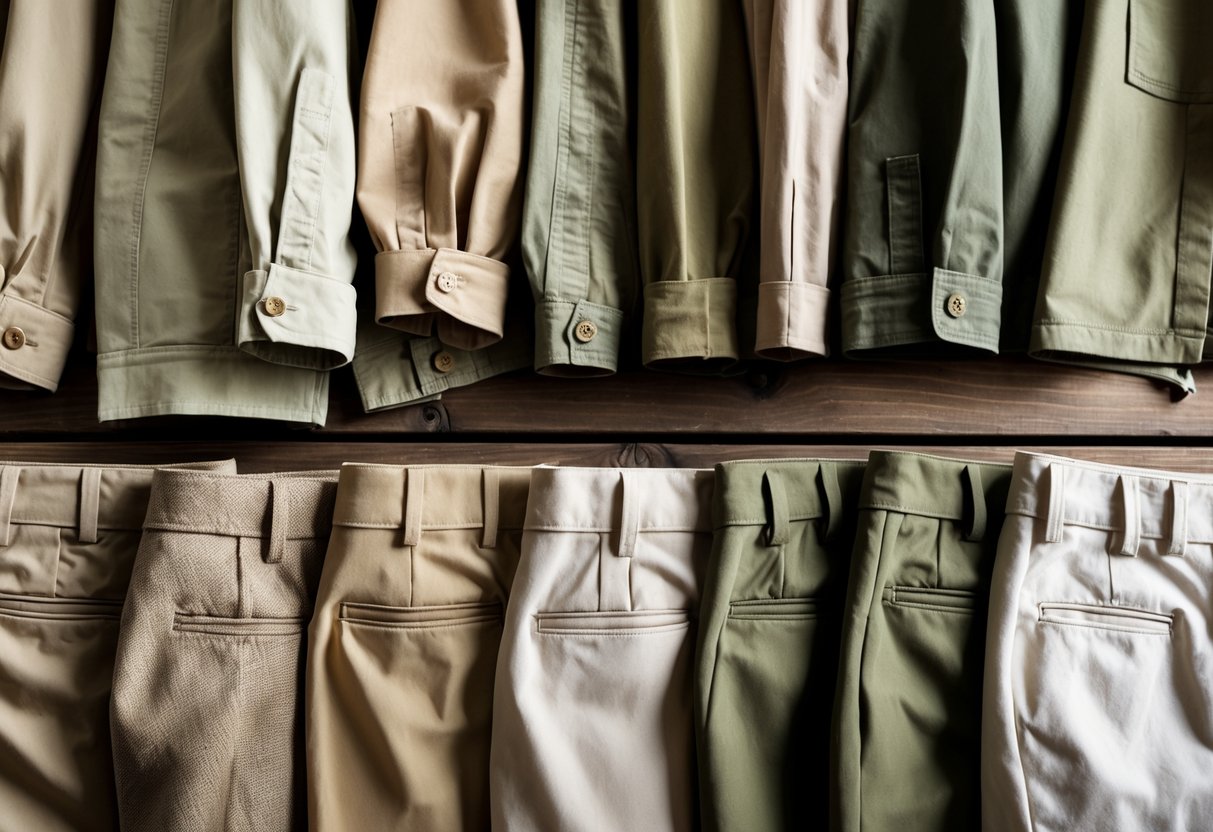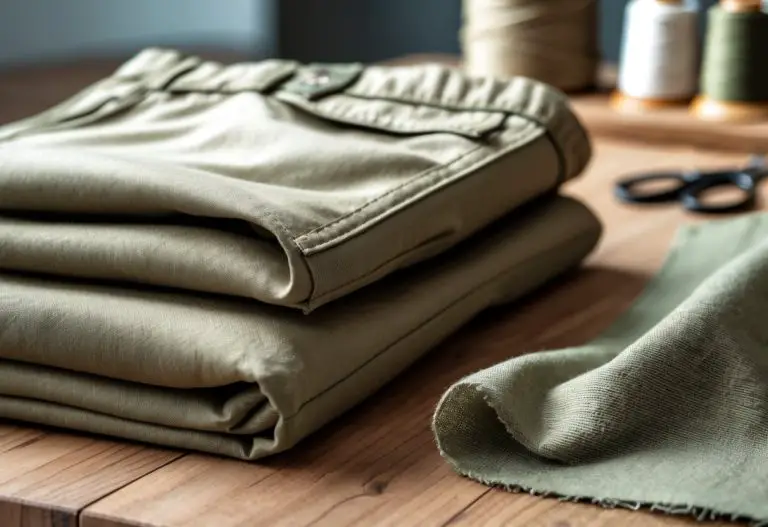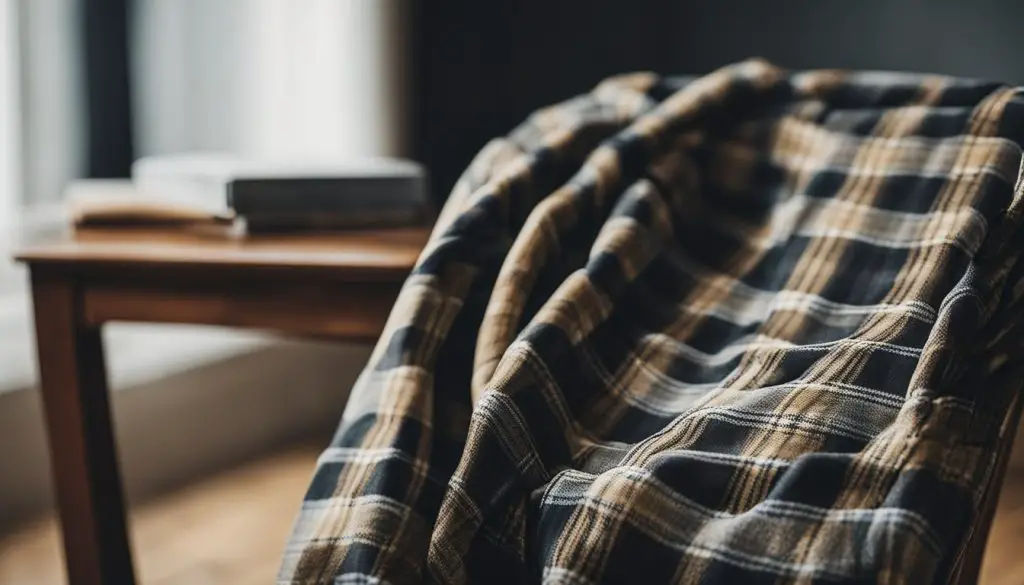Most people wonder if khaki refers to a color or a fabric when they see this term on clothing labels. Khaki is both a color and a type of fabric material. The word originally described a light brown cotton cloth used for military uniforms.
The confusion comes from how the fashion industry uses the word. Sometimes khaki means the tan or beige color itself. Other times it refers to the sturdy cotton twill fabric, no matter what color it is.
This dual meaning affects how people shop for clothes and talk about fashion. Understanding both uses helps explain why khaki pants can come in different shades and materials while still being called khaki.
Key Takeaways
- Khaki describes both a light brown color and a durable cotton fabric material
- The term originated from military uniforms and has evolved in fashion use
- Khaki clothing comes in different variations while keeping the same basic name
Is Khaki a Color or Material?

Khaki functions as both a color and a material term, with its meaning depending on context. The word originated from military use and has evolved to describe both a specific tan-brown shade and durable cotton fabrics used in uniforms and casual clothing.
Defining Khaki: Color, Material, and Usage
Khaki as a color refers to a light brown or tan shade with yellow undertones. The color khaki sits between beige and brown on the color spectrum. Paint manufacturers and fashion brands define khaki color slightly differently, but it typically appears as a muted, earthy tone.
Khaki as a material describes sturdy cotton twill fabric originally used for military clothing. This fabric often comes in the khaki color, which creates confusion between the two meanings. Modern khaki fabric can be dyed in various colors while keeping the same weave and weight.
The dual meaning creates overlap in everyday language. When someone says “khaki pants,” they usually mean pants made from khaki fabric in the khaki color. However, khaki fabric pants can come in navy, black, or other colors.
Etymology and Historical Origins
The word “khaki” comes from the Persian and Urdu root word “khākī,” meaning “dusty” or “earth-colored.” British soldiers in India first adopted this term in the 1840s. They needed uniforms that blended with the dusty landscape.
According to the history of khaki, the British Indian Army officially adopted khaki uniforms in 1885. This marked the first widespread military use of the color and fabric combination. The practical benefits of khaki made it popular beyond India.
Other armies quickly recognized khaki’s advantages. The color provided better camouflage than bright red or blue traditional uniforms. The fabric proved durable in harsh conditions.
Khaki in Military Uniforms and Workwear
Military uniforms popularized both khaki color and material worldwide. The U.S. Army adopted khaki uniforms during the Spanish-American War in 1898. World War I and World War II increased khaki’s military association.
Modern military applications:
- Combat uniforms in desert environments
- Dress uniforms for certain branches
- Training and utility clothing
Workwear companies adopted khaki for civilian use after World War II. The fabric’s durability made it ideal for work clothes. The neutral color worked well in professional settings.
Today’s workwear uses khaki material in various applications. Construction workers, mechanics, and office employees wear khaki garments. The color remains popular for business casual clothing and school uniforms.
Variations and Types of Khaki in Fashion

Khaki comes in many different styles, shades, and types in modern fashion. The most common variations include different pant styles like chinos versus traditional khakis, various color shades from light to dark, and popular designs like cargo pants.
Differences Between Khaki Pants and Chinos
Khaki pants and chinos are often confused, but have key differences. Traditional khaki pants use a heavier cotton twill fabric with a looser fit. They often have pleats and cuffs at the bottom.
Chinos use a lighter cotton fabric with a slimmer, more fitted cut. They have flat fronts without pleats and cleaner lines. The fabric feels smoother and looks more polished.
Key Differences:
- Fabric weight: Khakis are heavier, chinos are lighter
- Fit: Khakis are looser, chinos are fitted
- Style details: Khakis may have pleats, and chinos are flat-front
- Formality: Chinos look dressier than traditional khakis
Both pants come in similar khaki colors. The choice depends on the look someone wants and the occasion.
Shades of Khaki: Light, Dark, and Classic
Khaki comes in three main shade categories. Classic khaki is the original tan-beige color that most people recognize. This medium tone works well for both casual and business casual settings.
Light khaki appears almost cream or pale tan. This shade works best in warm weather and casual settings. It pairs well with darker tops and creates contrast in outfits.
Dark khaki has brown undertones and appears closer to chocolate or coffee colors. This darker shade hides stains better and works in cooler weather. It looks more formal than lighter shades.
Each shade serves different purposes:
- Light khaki: Summer wear, casual events
- Classic khaki: All-season, versatile option
- Dark khaki: Fall/winter, dressier occasions
Khaki Green, Olive Green, and Related Hues
Khaki also includes green-tinted colors beyond the basic tan shades. Khaki green mixes the traditional tan color with green undertones. This creates an earthy, military-inspired look.
Olive green is darker and more saturated than khaki green. It has stronger green tones with less brown mixed in. This color gained popularity from military uniforms.
Other related colors include:
- Sage green (lighter, grayer tone)
- Army green (deeper, darker shade)
- Desert tan (more yellow undertones)
These green-based khaki colors work well with neutral tops. They add variety to basic khaki wardrobes while maintaining the same versatile appeal.
Popular Styles: Cargo Pants and Khakis
Cargo pants represent one of the most popular khaki styles. They feature large pockets on the sides of the legs for extra storage. Originally designed for military use, they became mainstream casual wear.
Cargo pants come in all khaki shades from light to dark. The extra pockets make them practical for outdoor activities and casual wear. However, the bulky pockets can make legs appear wider.
Traditional khaki pants without cargo pockets remain popular for business casual settings. They offer a cleaner look that works in offices and semi-formal events.
Both styles serve different needs. Cargo pants work best for casual activities and outdoor use. Regular khaki pants suit professional and dressier casual situations.
Frequently Asked Questions
People often ask specific questions about khaki’s role as both a color and a fabric type. These questions cover how khaki appears in clothing, its color relationships, and practical styling choices.
What defines khaki in terms of apparel?
Khaki in apparel refers to both the fabric and color used in clothing items. The fabric is typically a sturdy cotton twill weave. The color ranges from light tan to olive brown.
Most khaki clothing uses this specific fabric construction. The weave creates durability for pants, shorts, and jackets.
How does the color khaki differ from beige?
Khaki has more yellow and green undertones compared to beige. Beige appears more neutral with gray undertones. Khaki looks earthier and warmer.
Beige works better with cool colors. Khaki pairs well with both warm and cool tones.
What are the various shades of khaki available?
Light khaki appears almost cream-colored with subtle tan hints. Medium khaki shows the classic tan-brown color most people recognize. Dark khaki moves toward olive or brown territories.
Desert khaki leans more yellow. Olive khaki contains more green undertones.
Can khaki be considered a color in English?
Yes, khaki functions as a recognized color name in English. Dictionaries list khaki as both a fabric type and a color description. The color meaning developed from the original fabric.
People use “khaki” to describe paint, home decor, and other non-fabric items. This proves its status as a true color term.
What color combinations work well with khaki?
Navy blue creates a classic combination with khaki. White provides clean contrast. Burgundy and forest green complement khaki’s warm undertones.
Light blue and coral work for softer looks. Black creates a sharp contrast for formal styles.



